Goat Discovery: Judging Presentations
Goat Discovery: Judging Presentations
- Video: Breeding Doe Class View
- Video: Breeding Doe Class Discussion
- Video: Breeding Doe Differences
- Video: Reasons
Written Reasons
Breeding Does - Chevy Vaske
I like the Breeding Does 3-2-1-4.
Here’s one that’s broody while remaining sound and flexible and that’s is the traditional cape doe I use to start. She’s set wider at the base of her horns being round in her rib and wider in her pin set ultimately giving her a balanced look from the side that I would expect of my class winner. Now sure, 2 is higher performing but still from a comparative standpoint, she’s more open about her shoulder and deeper chested.
Even so in my intermediate decision I’m quick to say I prefer her undeniable performance advantage over 1 and it’s just an added bonus that she’s the wider chested female who is more maternal in her rib. I’ll be the first to admit if you are looking for a more moderate, tall fronted female who is collected in her top 1 is for you. However, the darkest pigmented doe needs to be bolder in her forerib and laid back in the angle to her shoulder to allow a more comfortable stride.
In my final comparison I’m just more comfortable using the higher quality, easier keeping option who should require less inputs within the herd. Certainly, 4 has some length of body but quite honestly, she’s the flat ribbed doe who’s too short and round out of her hip.
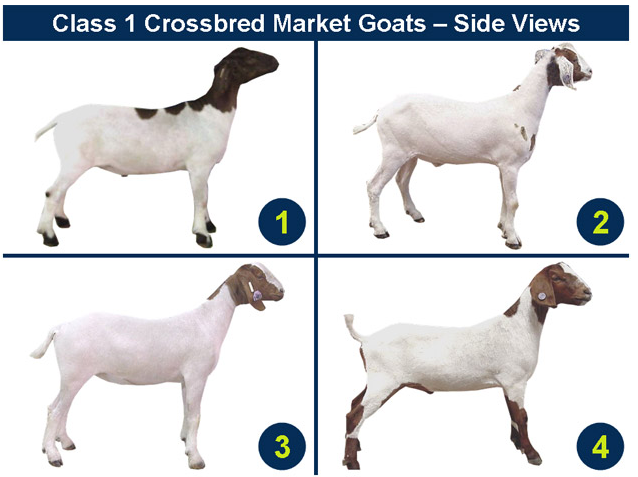
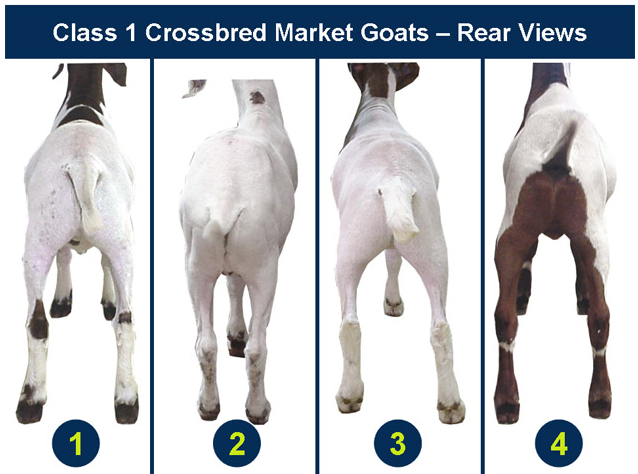
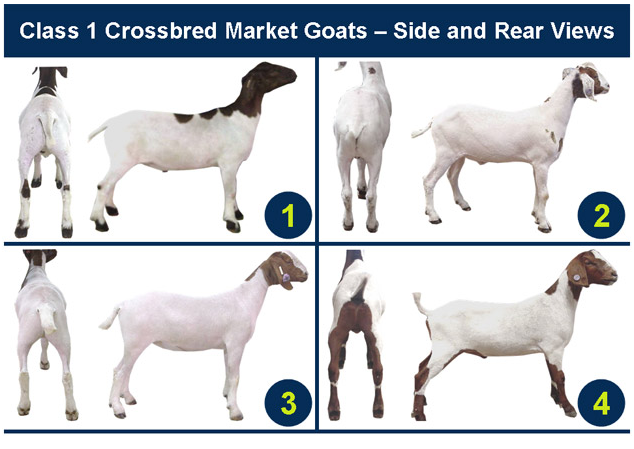
Official Placing = 3-1-4-2
Cuts = 2-4-3
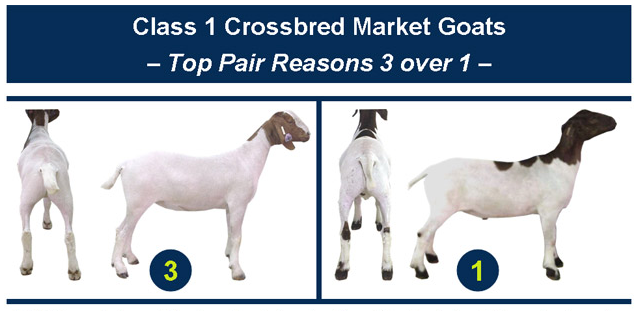
3-1-4-2 is my placing on this class of market goats. I found the class to break into a close top pair, a logical third and an easy bottom. Ideally my class winner could have been deeper bodied and stronger on his pasterns. Nonetheless it's still 3 over 1 in my initial pair as 3 was simply the most complete and proportionally balanced wether in the class. 3 was easily the freshest, bloomiest kid, in addition to being the heaviest muscled. He was squarer through his rack, thicker through his leg and was a boder sprung more open ribbed kid. Additionally he was a nicer balanced, taller fronted wether whose neck tied higher on his shoulders. These advantages should allow him to rail a carcass with more total pounds of retail product. I realize that 1 was deepter and fuller through his fore-rib and was stronger on his pasterns. However, this doesn't offset the fact that the red necked wether was low fronted, short necked and deep tying in his neck.
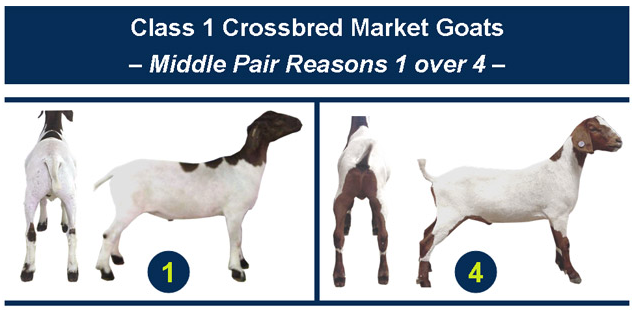
In reference to my intermediate pair it's still 1 over 4 as 1 more closely followed the pattern of my class winner in his muscularity. He was a stouter made, heavier boned kid who had more dimension down his top, was thicker through his hip and had more flair to his inner and outer leg. He should rail a carcass yielding more total pounds of leg and loin. I appreciate 4 for being a bigger framed, longer necked, more upstanding kid, however, I criticized the paint wether and left him thrid as he was fine boned and flat through his leg.
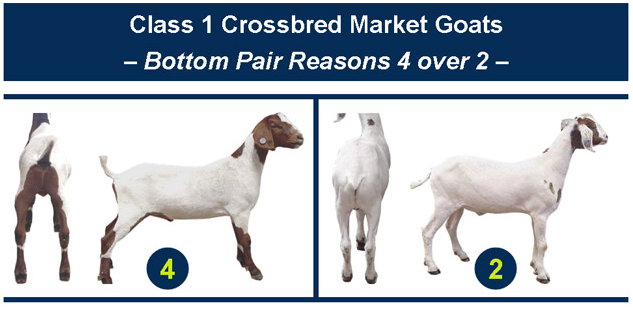
Nonetheless, I still preferred 4 over 2 in my concluding pair as 4 was a wider based, thicker chested, more powerful kid. Additionally he was a more stylish wether that was longer bodied and leveler rumped. When taken to the rail he should hang a carcass with more total pounds of high priced consumer preferred cuts. I appreciate that 2 was a taller fronted, longer necked kid. However, I criticized 2 and left him last as he was a steep rumped, sharp topped, narrow based, light muscled wether that when taken to the rail should hang the lowest yielding, least packer-preferred carcass in the class today.
